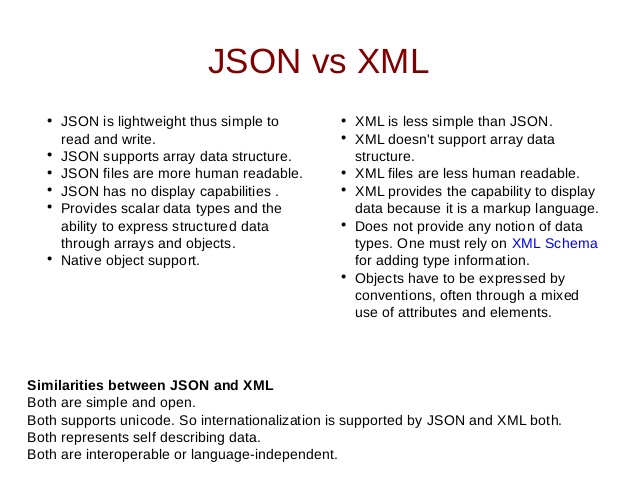What is JSON? What is XML? And what is the difference between JSON and XML? This article will give you the answer.
What is JSON?
JSON (JavaScript Object Notation), is a minimal, readable format for structuring data. It is used primarily to transmit data between a server and web application, as an alternative to XML. Squarespace uses JSON to store and organize site content created with the CMS.
What is XML?
In computing, XML (eXtensible Markup Language) is a markup language that defines a set of rules for encoding documents in a format that is both human-readable and machine-readable.
What is the difference between JSON and XML?
Both JSON and XML can be used to receive data from a web server.
The following JSON and XML examples both defines an employees object, with an array of 3 employees:
JSON Example
{“employees”:[
{ “firstName”:”John”, “lastName”:”Doe” },
{ “firstName”:”Anna”, “lastName”:”Smith” },
{ “firstName”:”Peter”, “lastName”:”Jones” }
]}
XML Example
<employees>
<employee>
<firstName>John</firstName> <lastName>Doe</lastName>
</employee>
<employee>
<firstName>Anna</firstName> <lastName>Smith</lastName>
</employee>
<employee>
<firstName>Peter</firstName> <lastName>Jones</lastName>
</employee>
</employees>
JSON is Like XML Because
- Both JSON and XML are “self describing” (human readable)
- Both JSON and XML are hierarchical (values within values)
- Both JSON and XML can be parsed and used by lots of programming languages
- Both JSON and XML can be fetched with an XMLHttpRequest
JSON is Unlike XML Because
- JSON doesn’t use end tag
- JSON is shorter
- JSON is quicker to read and write
- JSON can use arrays
The biggest difference is: XML has to be parsed with an XML parser. JSON can be parsed by a standard JavaScript function.

You can learn how to fix various issues regarding your mobile and gadgets by following https://geeksnation.net/ guides.